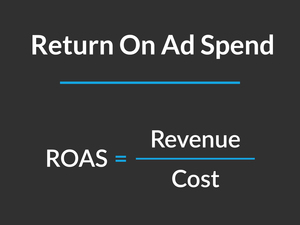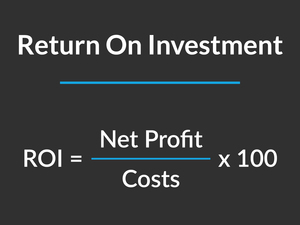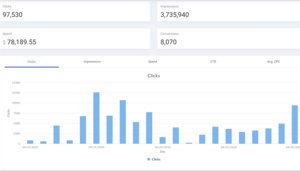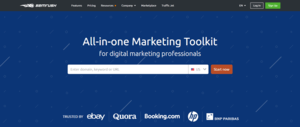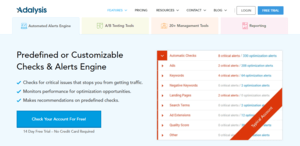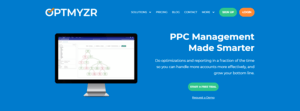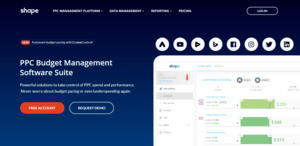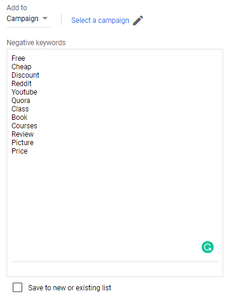Online marketing is a must for any business looking for serious growth today.
Your company can’t survive without advertising in a market where your competitors are spending multiple thousands of dollars on ads each month.
Yet…
Topping their advertising costs isn’t necessarily the smartest of solutions.
Your marketing can yield better results if you spend your budget where it serves you best. With that, you’ll make up for all your costs, attract better clients, and emerge profitable.
That’s why you must calibrate your marketing costs to ensure that your investments will succeed.
So that makes you wonder…
What metrics should I focus on to ensure profitable marketing?
1- Return On Ad Spend (ROAS)
ROAS is an essential metric that allows you to evaluate your ad spend and manage your budget more effectively.
It measures the expected returns for each dollar you spend on an ad. You’ll then be able to choose the best performing ads and spend more money on them.
You can easily calculate ROAS using the following formula:
For example:
If you spend $1000 and get $3000 in return, your ROAS is 3. The result means that — for each dollar you spend, you make three dollars back.
NOTE: When you are starting a brand new campaign (or existing), it’s necessary to also review your Average Order Value (AOV) and Cost Per Acquisition (CPA). Understanding these numbers will help track the “health” of your business and advertising overall. You’ll know that a CPA less than AOV is highly beneficial!
2- Return On Investement (ROI)
ROI is a financial metric used in many areas of business. It’s a ratio similar to ROAS, which also helps you assess your marketing campaigns’ success.
But…
Unlike ROAS, ROI deals with the overall costs of marketing and business. And it does that by looking at the net profit instead of revenue.
Here’s how to calculate the ROI for your campaigns:
For example:
A starter business has made $25000 in revenue in its’ first month. It spent $8000 on ads but also has additional financial costs of 18000$.
By running the calculations, we find:
(25000 – (8000+18000)) / (8000+18000) x 100 = -1000/26000 x 100 = -3.84%
The company has an ROI of -3.84, which means that it’s still losing money.
This is why you need both ROAS and ROI to better evaluate your success.
3- Customer Acquisition Cost (CAC)
CAC is the average cost a business pays to acquire a new customer. It’s a unique measure that can help you increase your profit margins significantly and dominate more markets.
Customer acquisition cost is calculated using the following formula:
For example:
A business spends $9000 (marketing expenses) each month to acquire new customers. That includes employer salaries, ad spend, paying for third-party tools, etc… The company acquired 150 new customers during that month.
In this case:
CAC = 9000 / 150 = $60
The business is spending $60 to acquire new customers, which can be either good or bad based on many factors.
But, the general rule of thumb is this:
A lower CAC allows more flexibility with your marketing budget as you can convert a lot more customers for lower prices.
4- Customer Lifetime Value (CLTV)
CLTV is a forecast of the total amount of money a customer will spend on your business. It tells you how valuable a client is throughout their whole relationship with your brand.
Calculating CLTV depends on your business plan and revenue model.
To calculate this measure, you must estimate the following :
- Average sale value
- Average number of transactions per customer
- Average customer lifespan
- Profit margins
Your formula should look something like this:
Calculating CLTV allows you to manage your ad campaigns more efficiently. You’ll have tangible numbers to compare to your customer acquisition costs.
You can then work on increasing CLTV and decrease CAC to boost profits and reduce costs.
Ready to Get Started With Paid Advertising?
Chaosmap has a dedicated team of digital marketing experts and professional advertisers at your service. We’ll help turn your company into a profitable business with paid advertising and PPC.
Take a quick look at our Pay Per Click services to learn more about our process. Contact us today to get a quote for your project.

